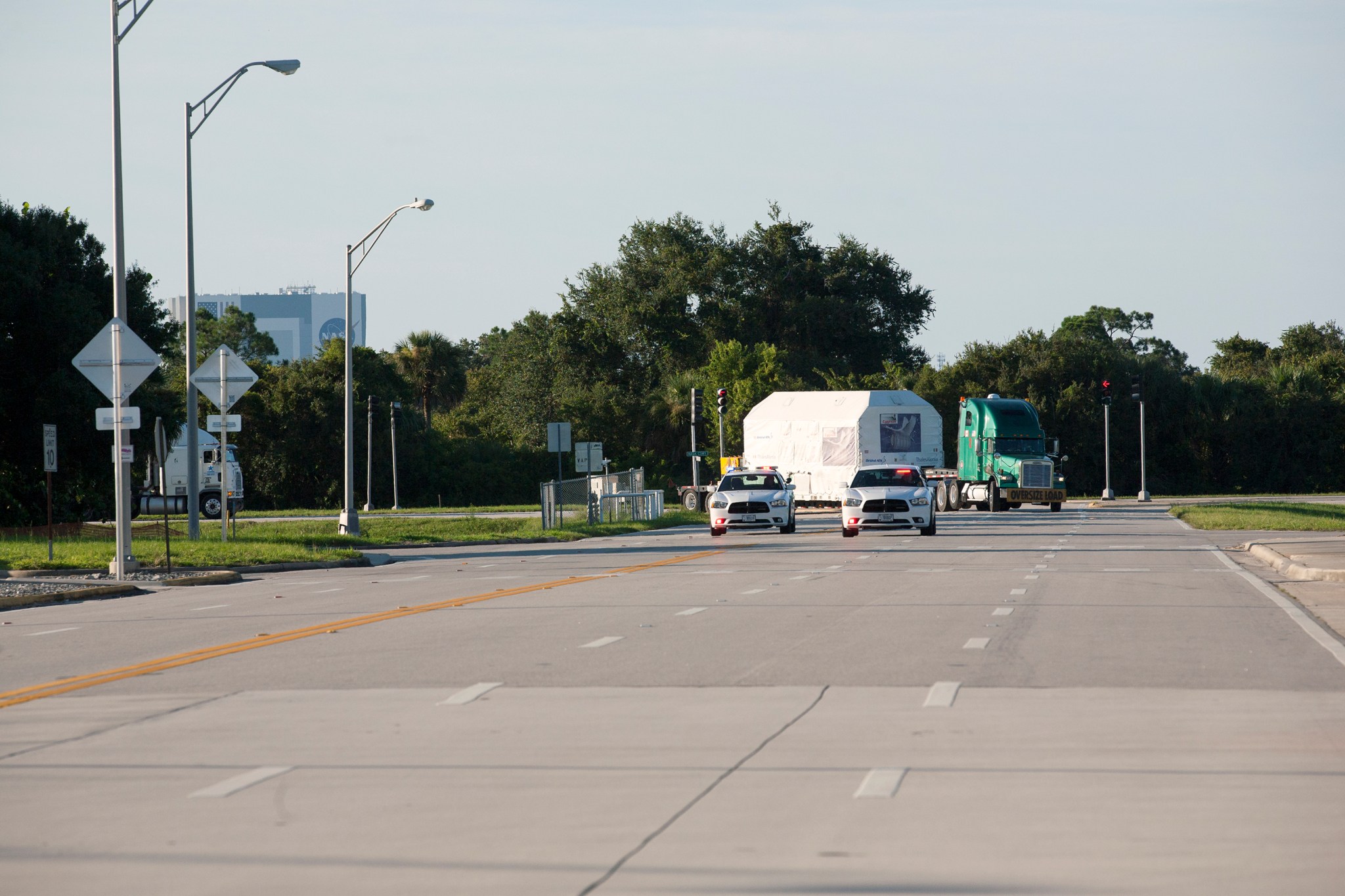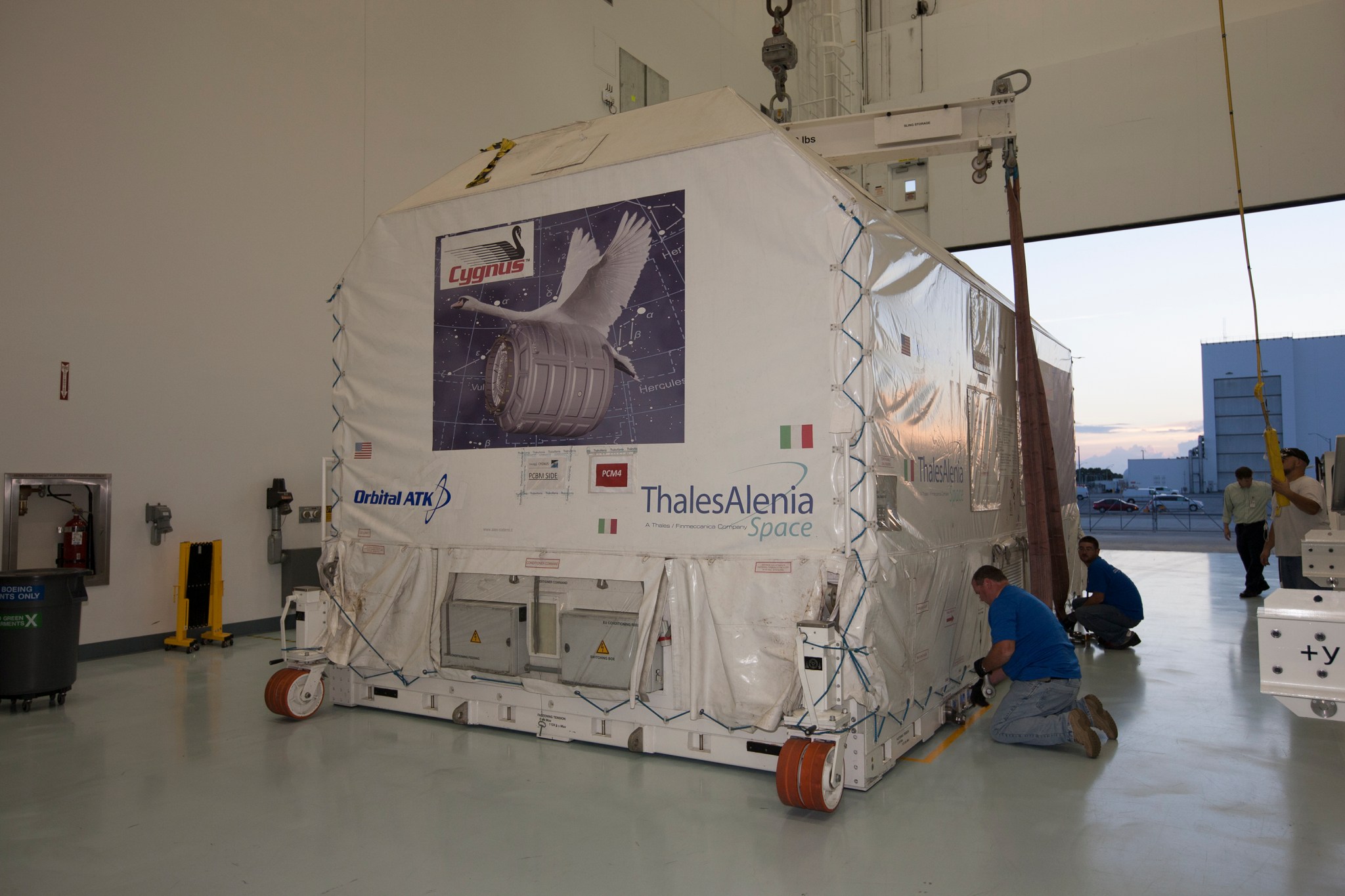A pressurized cargo module that soon will take four tons of materials and supplies to the International Space Station began the intensive processing for launch when it arrived Monday at NASA’s Kennedy Space Center in Florida. The Cygnus spacecraft – developed and produced by Orbital ATK – will be assembled at Kennedy and launched for the first time in December on a United Launch Alliance Atlas V rocket.
The unpiloted spacecraft will be the fourth operational mission for the Cygnus line of resupply spacecraft for the orbiting laboratory. This model, the Enhanced Cygnus, will be the largest ever flown and will carry some 3,000 pounds more to the station than the previous versions, enabling a delivery to the station of about 8,000 pounds of important research and supplies. The Cygnus module’s design is based on the multi-purpose logistics modules used to ferry supplies to the station using the now-retired space shuttles. It is smaller than those modules, though, since it has to fit inside a 12-foot-diameter payload fairing instead of a shuttle’s cargo bay.
The Cygnus will deliver a host of experiments to the station, along with equipment station residents need and the crucial supplies that allow astronauts to live in orbit for months and even a year at a time, in the case of NASA’s Scott Kelly.
While Cygnus has flown solely on Antares on all of its missions so far, Orbital ATK is using its flexibility and compatibility with multiple launch vehicles to launch its next mission on an Atlas V. This approach enables Antares the necessary time to perform its upgrades to its new engines. This will also be the first time a Cygnus spacecraft has flown from Cape Canaveral. Its previous missions began at NASA’s Wallops Flight Facility on Virginia’s Eastern Shore. Once in orbit, the Cygnus will guide itself to a position near the space station where the robotic arm on the station can grab it and connect it to a port on the station.
“This is a very exciting time for the Cygnus team at Orbital ATK,” said Frank DeMauro, vice president of Human Space Systems and program director of the Commercial Resupply Services program at Orbital ATK. “Not only are we launching from Kennedy on an Atlas V for the first time, but this will also be the first flight of the Enhanced Cygnus, which includes a larger cargo module and a more mass-efficient service module.”
Once positioned inside support fixtures in the high bay of Kennedy’s Space Station Processing Facility, engineers and technicians will inspect the cargo module and check its hatch against a mechanism identical to the port on the station where the Cygnus will be connected.
“We’ll perform a complete inspection of the cargo module and perform multiple tests to verify it is ready for cargo installation and flight,” DeMauro said.
The pressurized segment of the spacecraft will be connected to a service module that will arrive at Kennedy in October. Equipped with a pair of unfurling solar arrays, thrusters and an instrument package, the service module will provide power, guidance and control during the mission. About three-quarters of the cargo manifested for the flight will be loaded into the Cygnus while it is in the processing hall.
The complete Cygnus spacecraft will be moved to the Payload Hazardous Servicing Facility for fueling and will be encapsulated inside the payload fairing. The rest of the cargo will be loaded about two weeks prior to launch. Then the spacecraft will be moved to the Vertical Integration Facility at Space Launch Complex 41 and joined to the Atlas V rocket for launch.
The Cygnus cargo-carrier, which station crew will have loaded with disposable items from the station, will safely re-enter Earth’s atmosphere where it will burn up and complete its cargo mission.





























